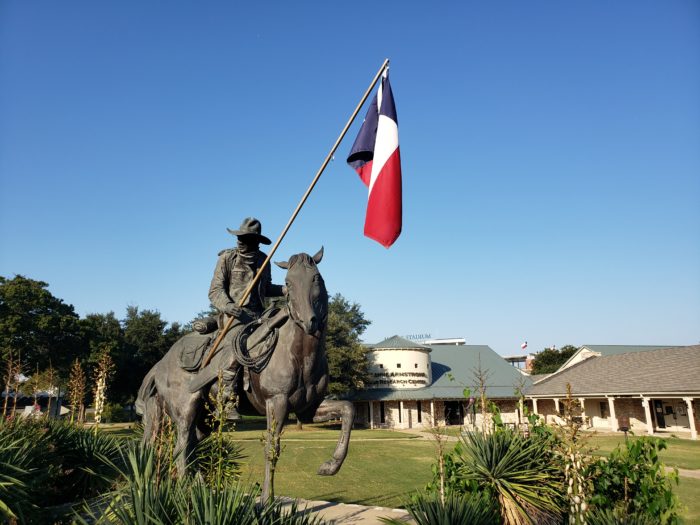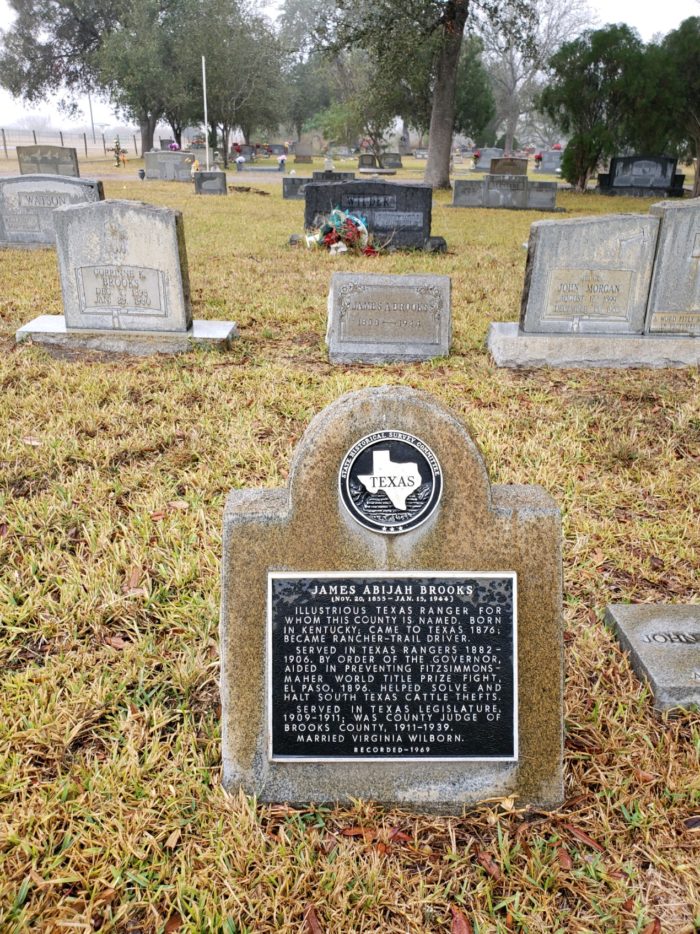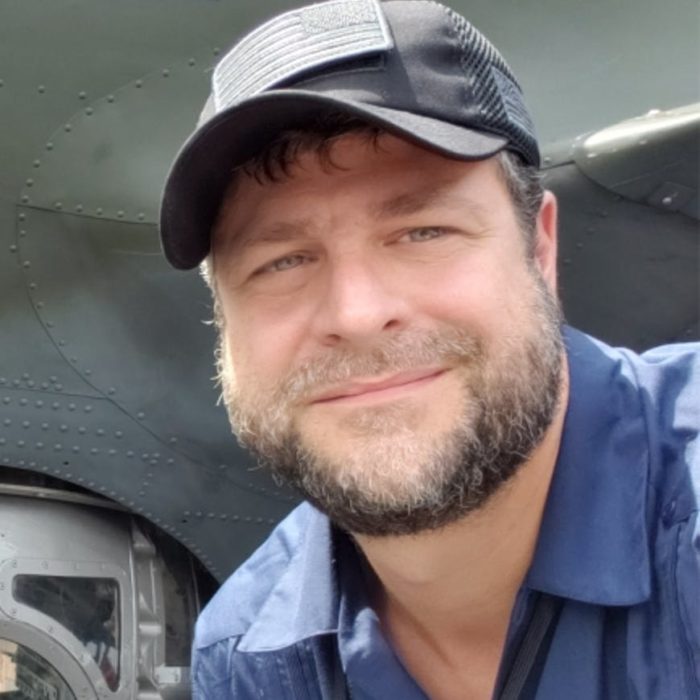by Joe Pappalardo
On July 26, 1887, Sgt. James Brooks listens to the jury foreman declare a guilty verdict with a sinking feeling in his stomach. Today the Texas Ranger, standing in a courtroom in Fort Smith, Arkansas, is one of three defendants. He and another Ranger, along with a federal U.S. Indian Agent, have been found guilty of manslaughter for shooting a cowboy in the Indian Territory while trying to disarm him.
The cowboy they shot resisted the attempt to take his gun, even though he knew he wasn’t supposed to wear one in the “town” of Alex, but the jury felt the use of deadly force was unwarranted. The conviction has derailed Brooks’ career, putting in jeopardy his destiny to become one of the four “Great Captains” of Texas Ranger history.
However, his case has become political. Grover Cleveland is only six months into his first term as President of the United States when Congressmen and Texas politicians press for a pardon for Brooks and the other two convicted lawmen. This is an easy way to curry favor with two states’ Congressional delegations and a wildly popular Democratic governor as well. But the move also jibes with the message of his administration when it comes to the Indian Territories—Cleveland is an ardent opponent of illegal settlement, putting him in alliance with the efforts of tribal officials and the Cherokee Strip Live Stock Association to safeguard their lands against incursion. Empowering the US Indian Agents—and even visiting lawmen—is one way to send that message.
On September 13, Cleveland signs the pardons of the three men. Brooks is reinstated with Company F, and in 1888, he’s promoted to become its Captain. This amazing White House intervention sets him back on his path to guide the Texas Rangers into the future.
Big, institutional changes are coming. The “Frontier Battalion,” formed in 1874 as the first permanent force of Texas Rangers, found foes in the Comanche and Kiowa. But with the Indian presence largely crushed and tribal lands ceded to the United States, the Rangers of the late 1800s fixate on another target—criminals. The companies are no longer military cavalry who occasionally chase outlaws, they’re roaming, mounted police officers.
In 1901, this reality seems to be codified by the state. A new Texas law loses the Frontier Battalion name and reorganizes the men. It forms four companies of 20 Rangers each, commanded by Captains John Hughes, Bill McDonald, J.H. Rogers, and James Brooks. These four “Great Captains” will steer the Rangers into a modern age of law enforcement while branding the organization with their hard-riding, frontier ethos.
Great Captain inspiration will be needed in the years to come. The Texas Rangers reverted to their martial roots in 1915 during the cross-border chaos of the Mexican Civil War, expanding into a lawless mounted militia. They terrorized the Mexican residents of the Rio Grande Valley. Texas representative J.T. Canales in 1919 holds hearings that brings the abuses to light and eventually prompts another Ranger reform.
Canales knows the Rangers from an earlier era would be repulsed by these actions. Canales cites Brooks by name (he’s now county judge) and calls him and the other Ranger captains of the previous generation “the noblest and best men that I know…At that time they gave us protection. They were a capable set of men and did not need any restriction because their own conscience was a self-restraint and law.” That stands in brutal contrast to the 1915 Rangers who spread racial violence and caused a mass migration from South Texas.
Brooks’ presence looms large, even today. As Americans reexamine the nation’s past, the Texas Rangers have been vilified. In response, defenders of the organization’s legacy point to Brooks and the other Great Captains as champions, avatars of the Texas Ranger ideal. Both sides seem to take the outlaw hunting prowess of the Rangers for granted.
But how could a small unit, with a crushing workload and heavy pressure from the Governor’s office, achieve results? How did local communities react to these armed interlopers? Where did Brooks and the other Great Captains learn their craft? Who influenced these pivotal figures? These practical questions are lost amid any simplistic debate over whether the Texas Rangers deserve only disdain or praise.
Confusion over the Texas Rangers is nothing new. A member in the late 1800s, N. A. Jennings, sums up the organization’s mystique and misunderstanding even then: “Nearly everyone has heard of the Texas Rangers at some time in his life, but how many know what the Rangers really are, or what are their duties? In a general way, everyone knows they are men who ride around on the Texas border, do a good deal of shooting, and now and then get killed or kill someone. But why they ride around, or why they do the shooting, is a question which might go begging for an answer for a long time without getting a correct one.”
I wrote Red Sky Morning as an answer, and focused on the adventures of the Rangers of Company F during 1886 to 1888. During that time, Brooks took part in three fatal shootings, including the killing of the cowboy that nearly ended his career. Over two years he will see six men die—and his own body maimed—in gunfights. Each incident is an opportunity to examine the local circumstances that prompted Ranger intervention, their intelligence, and tactical operations and the motives of the outlaws.
Besides the intrigue and bloodshed, many other interesting things emerge while examining Brooks’ career in Company F. One of them is the influence exerted over him and then-private John Rogers by Capt. William Scott, the company’s wily and decisive leader. In many ways, Scott is a forgotten great Ranger captain, with perhaps his most lasting influence on the organization being the mark he made on Rogers and Brooks. By imprinting these two future leaders with his law enforcement ethos—the relentless chase, judicious hand, deliberate violence, unyielding fraternity—Scott helped set the mold for generations of Rangers to come.
When James Brooks receives his presidential pardon and rejoins the Texas Rangers in 1887, the reverberations will be felt for hundreds of years. But even his epic story is not one that validates or damns the Texas Rangers of the era—no properly nuanced crime story can or should do that. Experiencing his adventures between 1886 and 1888 does, however, help explain how the organization was able to survive its worst moments by embracing the figures from its past. Who those men were, and how they did their work, has never been more relevant.
Joe Pappalardo is the author of the critically acclaimed books Inferno: The True Story of a B 17 Gunner’s Heroism and the Bloodiest Military Campaign in Aviation History, Sunflowers: The Secret History and Spaceport Earth: The Reinvention of Spaceflight. Pappalardo is a freelance journalist and former associate editor of Air & Space Smithsonian magazine, a writing contributor to National Geographic magazine, a contributor to Texas Monthly, and a former senior editor and current contributor to Popular Mechanics. He has appeared on C-Span, CNN, Fox News and television shows on the Science Channel and the History Channel.



